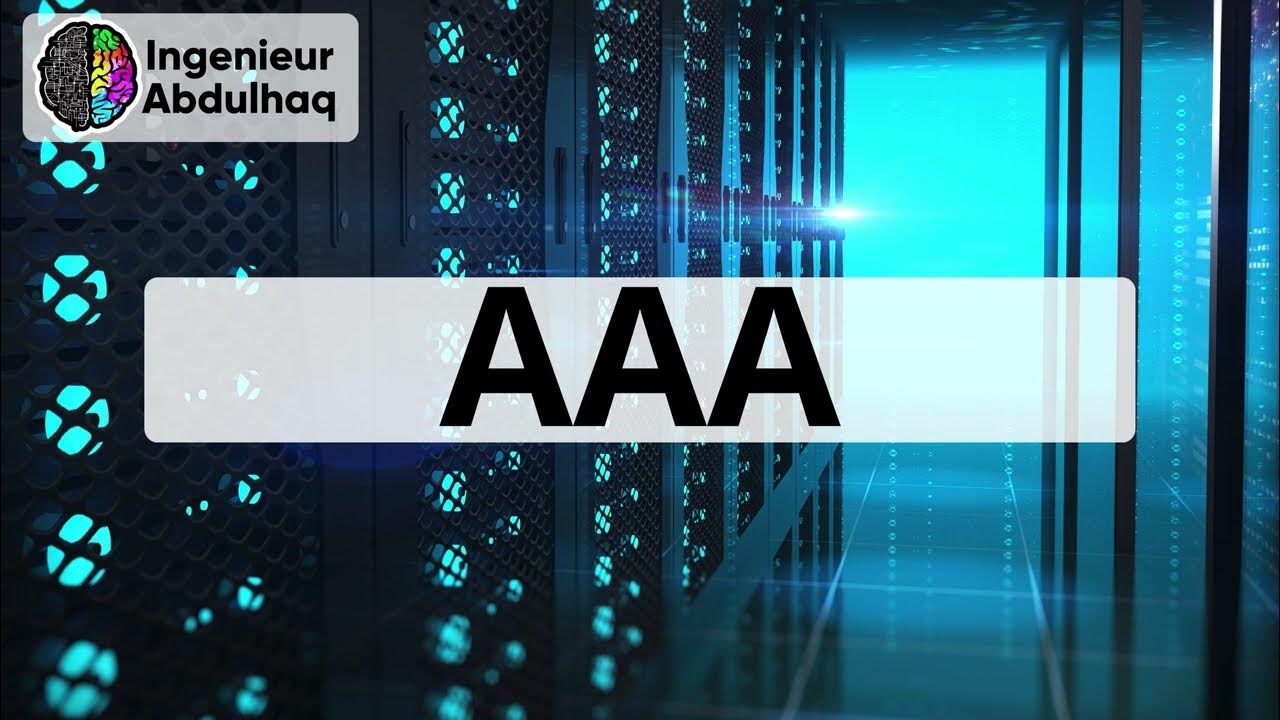Authentication, Authorization, and Accounting - CompTIA Security+ SY0-701 - 1.2
Summary
TLDRThe script delves into the AAA framework—Authentication, Authorization, and Accounting—crucial for secure access to systems. It illustrates the login process, explaining how identification and authentication confirm a user's identity, while authorization determines access rights. The example of logging into a VPN server clarifies the role of an AAA server. The video also explores certificate-based authentication for devices, the importance of a Certificate Authority, and the necessity of scalable authorization models to manage user access efficiently across large networks.
Takeaways
- 🔒 The login process involves identification, authentication, and authorization, collectively known as the AAA framework.
- 👤 Identification is claiming to be a particular user, while authentication verifies the user's identity through credentials like a password or additional factors.
- 🗝️ Authentication factors are used to prove identity, such as knowing a secret password or having additional authentication methods.
- 📋 Authorization determines the access level and resources a user can access based on their role or department.
- 📈 AAA servers centralize user authentication information, which is crucial for managing security across multiple systems.
- 🌐 Practical examples of AAA are demonstrated through scenarios like logging into a VPN server, which uses a concentrator and an AAA server for access control.
- 🖥️ Security professionals manage security on numerous systems that may be globally distributed, necessitating remote verification methods.
- 📜 Certificates, particularly those signed by a Certificate Authority (CA), are used for device authentication, ensuring devices are authorized to connect to a network.
- 🔑 The CA is responsible for managing and issuing certificates, which are essential for verifying the authenticity of devices and users.
- 🔄 The process of creating and verifying certificates involves the CA's own certificate signed by a root CA and device certificates signed by the CA.
- 📊 Authorization models are used to manage access to resources efficiently, especially when scaling for large numbers of users or resources.
- 🔄 Group-based access, where users are added to groups with predefined permissions, simplifies the administration of authorizations in large organizations.
Q & A
What is the primary purpose of the login process?
-The primary purpose of the login process is to identify and authenticate users to ensure they are who they claim to be, and then to authorize them to access appropriate resources on the system.
What are the three components of the AAA framework?
-The three components of the AAA framework are Authentication, Authorization, and Accounting.
How does the AAA server verify a user's identity during the login process?
-The AAA server verifies a user's identity by checking the provided username, password, and other authentication factors against its database to confirm if they match a valid user.
What is the role of a VPN concentrator in the AAA process?
-The VPN concentrator acts as an intermediary between the client and the AAA server, prompting for login credentials and forwarding them to the AAA server for verification.
Why is it important to have a log of system access activities?
-It is important to have a log of system access activities for security auditing, tracking user behavior, and ensuring accountability for actions performed within the system.
How can a device be authenticated without typing a password?
-A device can be authenticated using a digital certificate that is signed by a trusted Certificate Authority (CA). This certificate can be used as an authentication factor during the login process.
What is a Certificate Authority (CA) and its role in security?
-A Certificate Authority (CA) is a device or software responsible for managing all certificates in an environment. It issues and signs certificates that can be used to authenticate devices and users.
Why is it necessary to have a root CA signing the CA's certificate?
-The root CA signing the CA's certificate establishes a chain of trust, ensuring that the CA is trusted and that the certificates it issues are also trustworthy.
What is an authorization model and how does it simplify access management?
-An authorization model is a system that defines the access rights and permissions for users or groups, simplifying access management by allowing administrators to assign permissions to groups rather than individual users.
How does adding a user to a group in an authorization model streamline access management?
-By adding a user to a group with predefined access rights, administrators can quickly grant the necessary permissions to multiple users without having to set up individual rights for each user.
What challenges arise when trying to scale a system without an authorization model?
-Without an authorization model, managing access rights for a large number of users and resources becomes cumbersome and inefficient, as each user's permissions must be set up manually.
Outlines

هذا القسم متوفر فقط للمشتركين. يرجى الترقية للوصول إلى هذه الميزة.
قم بالترقية الآنMindmap

هذا القسم متوفر فقط للمشتركين. يرجى الترقية للوصول إلى هذه الميزة.
قم بالترقية الآنKeywords

هذا القسم متوفر فقط للمشتركين. يرجى الترقية للوصول إلى هذه الميزة.
قم بالترقية الآنHighlights

هذا القسم متوفر فقط للمشتركين. يرجى الترقية للوصول إلى هذه الميزة.
قم بالترقية الآنTranscripts

هذا القسم متوفر فقط للمشتركين. يرجى الترقية للوصول إلى هذه الميزة.
قم بالترقية الآنتصفح المزيد من مقاطع الفيديو ذات الصلة

4 - AAA (Authentication - Authorization - Accounting) Security+ SY0-701 - عربي

KEAMANAN JARINGAN | 3.4 Memahami Fungsi dan Cara Kerja Server Autentikasi

Oauth2 JWT Interview Questions and Answers | Grant types, Scope, Access Token, Claims | Code Decode

What is Firebase Authentication?

ASP.NET Authentication using Identity in 10 Minutes - Authentication and Authorization in .NET8

Cloud-native authorization standards
5.0 / 5 (0 votes)
